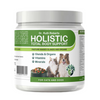In the vast landscape of pet food options, the towering presence of brands like Purina often dominates the shelves, presenting itself as a go-to solution for pet nutrition. However, beneath the surface of widespread availability and marketing prominence lies a complex narrative that necessitates a deeper examination for any responsible pet owner. With a history marked by recalls and a response time to such issues that leaves much to be desired, the question of whether Purina's offerings can be considered safe for our beloved pets comes sharply into focus.
Recalls: A Reflection of Deeper Issues
The journey of a pet food brand is often punctuated by the occasional recall, an event that, while concerning, is not uncommon in the industry. However, when such incidents become a pattern, as seen with Purina, they serve as indicators of potentially systemic problems within the company’s quality assurance processes. The foot-dragging response to these recalls only compounds the concern, suggesting a reluctance to address and rectify the root causes of these failures promptly. For pet owners, this pattern of behavior can erode trust in a brand that is tasked with nourishing their pets.
The Veil of Uncertainty
One of the most unsettling aspects of choosing pet food from a major brand is the uncertainty that shrouds the entire process. Pet owners are often left in the dark, from the origin of ingredients to the conditions under which the food is manufactured. This lack of transparency is particularly troubling given the myriad ways in which pet food production can falter, leading to compromised product safety. The truth is, without a clear and open line of sight into the production process, claiming any pet food is unequivocally safe becomes a matter of faith rather than fact.
The Complex Path From Production to Bowl
Pet food manufacturing is a complex affair involving numerous stages where things can go awry. The chain of production, from sourcing ingredients to final packaging, is fraught with potential hazards. These include contamination risks, quality control failures, and the simple fact that errors can occur at any step of the process. This complexity adds layers of risk, making it increasingly challenging to ensure the safety of the final product that reaches our pets’ bowls.
A Call for Caution and Better Choices
Given the concerns outlined, the call for pet owners to exercise caution and seek better alternatives is clear. The well-being of our pets is paramount, and navigating the pet food landscape requires a critical eye and an unwillingness to compromise on safety. Alternative nutritional options, including brands with transparent practices and a clean safety record, homemade pet diets under veterinary guidance, and fresh, whole-food-based diets, present viable paths forward. These alternatives not only alleviate the worries associated with mass-produced pet food but also embrace a more holistic approach to pet nutrition.
Conclusion
In the end, the decision on what we feed our pets boils down to a matter of trust and safety. The history and practices of brands like Purina, marked by repeated recalls and an opaque production process, underscore the need for a more discerning approach to choosing pet food. As pet owners, our responsibility to our furry companions demands that we seek out not just the most convenient or popular options, but those that hold the health and safety of our pets in the highest regard. It's a journey that calls for vigilance, research, and sometimes, a willingness to explore new avenues for the sake of our pets' well-being.











